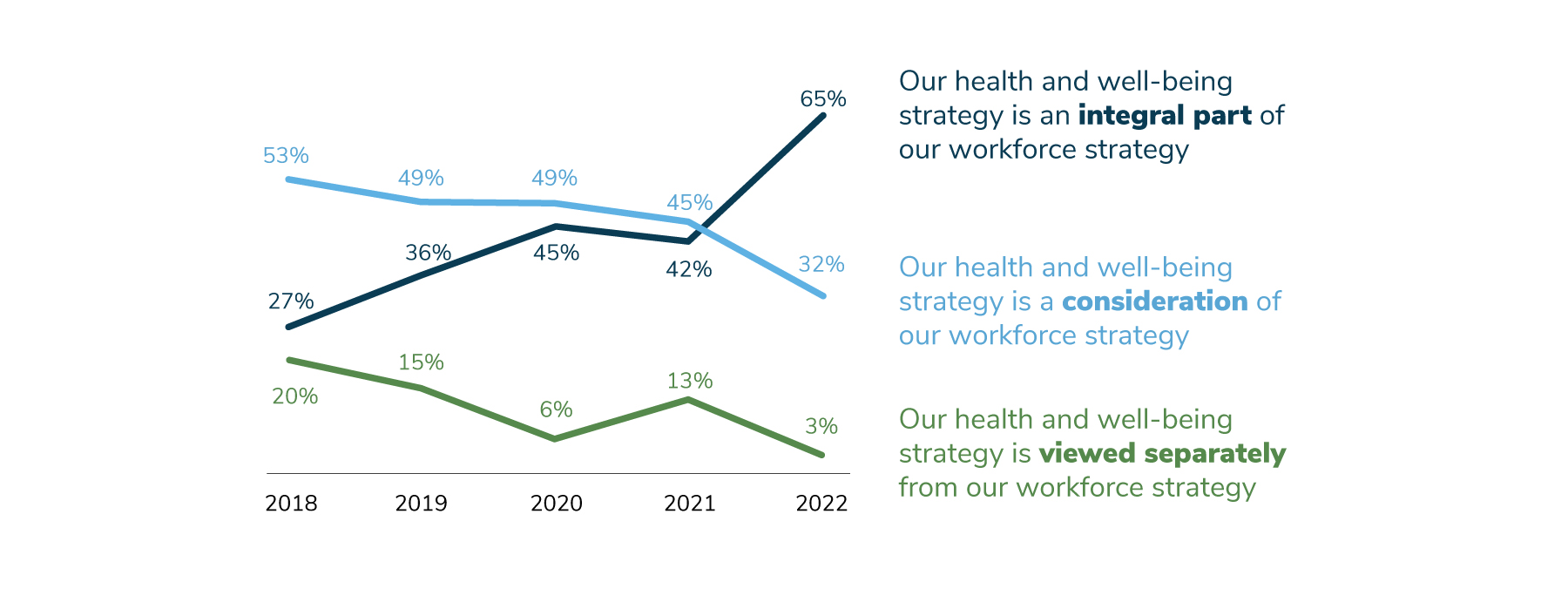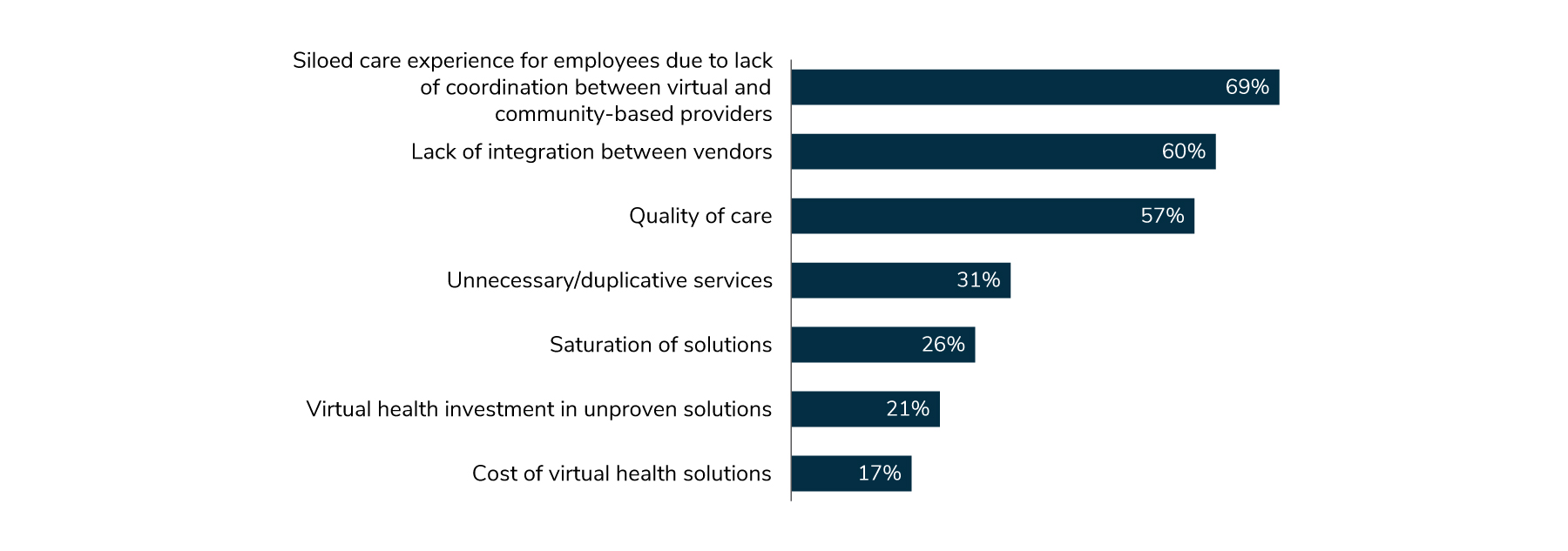August 23, 2022
Looking for the latest data?
Check out our 2024 Large Employer Health Care Strategy Survey, released in August 2023.
Based on the findings from the 2023 survey, the following emerged as top focus areas among employers.
1| Dramatic increase in the importance of health and well-being to workforce strategy due to many factors.
While COVID-19 emphasized the importance of the role of health and well-being in the workplace, the rising number of employers asserting that their health and well-being strategy plays an integral role in workforce strategy—increasing from 42% to 65%—is the culmination of many factors that have been building for several years. These include the need to attract and retain talent through benefits and offerings, as well as supporting employees’ overall health and well-being and its impact on business performance and culture.

2| The time to assess and improve virtual health has come.
Virtual health has permeated many aspects of employer health and well-being offerings. In fact, 74% believe that virtual health will have a significant impact on how care is delivered in the future. Yet virtual health is approaching a critical crossroads. To have influence on the quality of care, 84% of employers believe that integrating virtual health and in-person care delivery is essential and the most important action their partners can take. Otherwise, the virtual health experience may lead to duplication of services, unnecessary care, wasteful spending and a fragmented care experience. Despite existing integration challenges, employers believe virtual health holds promise. This is evidenced by the anticipated growth of virtual primary care offerings, increasing from 32% in 2022 to 69% in 2025, and plans by 57% of employers to add even more virtual health solutions in 2023. In sum, virtual health is here to stay, but improvements in quality, integration and marketplace rationalization are needed before it can realize its full potential.


You can view the Executive Summary by clicking the download button below.

2023 Large Employers’ Health Care Strategy Survey: Executive Summary
-
Introduction2023 Large Employers’ Health Care Strategy and Plan Design Survey
-
Full Report2023 Large Employers’ Health Care Strategy Survey: Full Report
-
Executive Summary2023 Large Employers’ Health Care Strategy Survey: Executive Summary
-
Chart Pack2023 Large Employers’ Health Care Strategy Survey: Chart Pack
-
InfographicInfographic: Managing Rising Health Care Costs in 2023
-
Part 12023 Large Employers’ Health Care Strategy Survey: Perspectives on the Evolving Health Care Landscape
-
Part 22023 Large Employers’ Health Care Strategy Survey: Health Equity
-
Part 32023 Large Employers’ Health Care Strategy Survey: The Health Care Delivery System
-
Part 42023 Large Employers’ Health Care Strategy Survey: Health and Pharmacy Plan Design
-
Part 52023 Large Employers’ Health Care Strategy Survey: Health Care Costs and 2023 Priorities
-
InfographicInfographic: Prescription Costs and Pharmacy Benefits
-
InfographicInfographic: Cancer - Improve Quality, Reduce Costs
